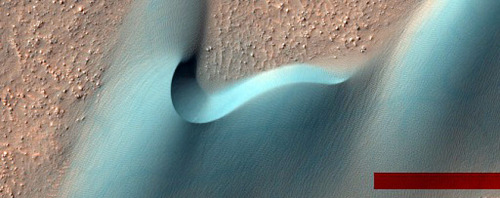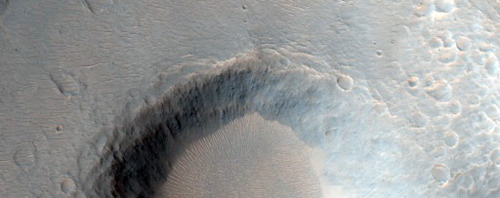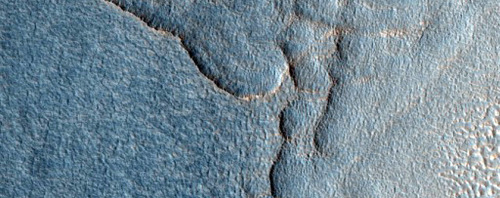Lol Sometimes Science Publications Are Like 20 Pages Of Gibberish. It Feels Like An Alien Language I’m
lol sometimes science publications are like 20 pages of gibberish. It feels like an alien language I’m learning slowly as I stare at the pages…
—___—
More Posts from Maevetheeuropan and Others

bioshock infinite is about to become reality

When Japan began to rebuild after the 2011 earthquake and tsunami, artist Manabu Ikeda started a massive pen & ink piece. He worked 10 hours a day, 6 days a week, for 3.5 years before finishing ‘Rebirth’, a 13x10 foot drawing of a tree rising from chaos and ruin. Source Source 2









Very strange things happen to your body if you spend a year in space
NASA Astronaut Scott Kelly returns to Earth Tuesday night after spending almost a year in space.
But his 340 days aboard the International Space Station (ISS) haven’t been all fun and games.
Our bodies evolved on Earth, so they’re not built for weightlessness — which is exactly why NASA plans to use Kelly to study the long-term effects of spaceflight the human body.



New HiRISE Images
NASA’s HiRISE mission has just released an amazing swathe of new images of the Martian surface.
This mission’s a personal favorite as their images have been detailing Mars in an almost “Google Earth” manner of beauty. From the Martian sky you can see the dunes, craters and other features that litter the landscape, revealing the clues that detail the mysterious story of Mars.
See the images here!
(Image credit: NASA/JPL/University of Arizona)


POTENTIAL HABITATS FOR EARLY LIFE ON MARS
Recently discovered evidence of carbonates beneath the surface of Mars points to a warmer and wetter environment in that planet’s past. The presence of liquid water could have fostered the emergence of life.
A new study by James Wray at the Georgia Institute of Technology and Janice Bishop of the SETI Institute, as well as other collaborators, has found evidence for widespread buried deposits of iron- and calcium-rich Martian carbonates, which suggests a wetter past for the Red Planet.
“Identification of these ancient carbonates and clays on Mars represents a window into history when the climate on Mars was very different from the cold and dry desert of today,” notes Bishop.
The fate of water on Mars has been energetically debated by scientists because the planet is currently dry and cold, in contrast to the widespread fluvial features that etch much of its surface. Scientists believe that if water did once flow on the surface of Mars, the planet’s bedrock should be full of carbonates and clays, which would be evidence that Mars once hosted habitable environments with liquid water. Researchers have struggled to find physical evidence for carbonate-rich bedrock, which may have formed when carbon dioxide in the planet’s early atmosphere was trapped in ancient surface waters. They have focused their search on Mars’ Huygens basin.
This feature is an ideal site to investigate carbonates because multiple impact craters and troughs have exposed ancient, subsurface materials where carbonates can be detected across a broad region. And according to study led James Wray, “outcrops in the 450-km wide Huygens basin contain both clay minerals and iron- or calcium-rich carbonate-bearing rocks.”
The study has highlighted evidence of carbonate-bearing rocks in multiple sites across Mars, including Lucaya crater, where carbonates and clays 3.8 billion years old were buried by as much as 5 km of lava and caprock.
The researchers, supported by the SETI Institute’s NASA Astrobiology Institute (NAI) team, identified carbonates on the planet using data from the Compact Reconnaissance Imaging Spectrometer for Mars (CRISM), which is on the Mars Reconnaissance Orbiter. This instrument collects the spectral fingerprints of carbonates and other minerals through vibrational transitions of the molecules in their crystal structure that produce infrared emission. The team paired CRISM data with images from the High Resolution Imaging Science Experiment (HiRISE) and Context Camera (CTX) on the orbiter, as well as the Mars Orbiter Laser Altimeter (MOLA) on the Mars Global Surveyor, to gain insights into the geologic features associated with carbonate-bearing rocks.
The extent of the global distribution of martian carbonates is not yet fully resolved and the early climate on the Red Planet is still subject of debate. However, this study is a forward step in understanding the potential habitability of ancient Mars.
Preview of paper: http://onlinelibrary.wiley.com/doi/10.1002/2015JE004972/abstract
TOP IMAGE….Ancient layered clay-bearing bedrock (top left) and carbonate bedrock (bottom right) are exposed in the central uplift of an unnamed crater approximately 42 kilometers in diameter in eastern Hesperia Planum, Mars. The image was taken by the High Resolution Imaging Science Experiment (HiRISE) instrument aboard the Mars Reconnaissance Orbiter. Credit: NASA/JPL/University of Arizona
LOWER IMAGE….Aeolian bed forms overlie ancient layered, ridged carbonate-rich outcrop exposed in the central pit of Lucaya crater, northwest Huygens basin, Mars. The image was taken by the High Resolution Imaging Science Experiment (HiRISE) instrument aboard the Mars Reconnaissance Orbiter. Credit: NASA/JPL/University of Arizona
Okay now that I’m starting to get my ass in gear for astrophotography, I’d love it if some of y’all sated my need for attention and followed my instagram! I will return the favor of course
It’s mostly just space pictures, dogs, me, hiking stuff and lab stuff
-
 onedragonarmy liked this · 8 years ago
onedragonarmy liked this · 8 years ago -
 soanimeanyone reblogged this · 8 years ago
soanimeanyone reblogged this · 8 years ago -
 heir-to-the-diamond-throne liked this · 8 years ago
heir-to-the-diamond-throne liked this · 8 years ago -
 goddess-of-the-galaxy liked this · 8 years ago
goddess-of-the-galaxy liked this · 8 years ago -
 planned-planethood reblogged this · 8 years ago
planned-planethood reblogged this · 8 years ago -
 loveisjustabloodsportson liked this · 8 years ago
loveisjustabloodsportson liked this · 8 years ago -
 the-heavy-metal-astronomer liked this · 8 years ago
the-heavy-metal-astronomer liked this · 8 years ago -
 bigdreamstonsofweirdness liked this · 8 years ago
bigdreamstonsofweirdness liked this · 8 years ago -
 bittertwee liked this · 8 years ago
bittertwee liked this · 8 years ago -
 rabraha3-blog reblogged this · 8 years ago
rabraha3-blog reblogged this · 8 years ago -
 ruidoazul liked this · 8 years ago
ruidoazul liked this · 8 years ago -
 stupidtumblrurl liked this · 8 years ago
stupidtumblrurl liked this · 8 years ago -
 nnovae liked this · 8 years ago
nnovae liked this · 8 years ago -
 iamlareina liked this · 8 years ago
iamlareina liked this · 8 years ago -
 antiraigeki liked this · 8 years ago
antiraigeki liked this · 8 years ago -
 maevetheeuropan reblogged this · 8 years ago
maevetheeuropan reblogged this · 8 years ago -
 maevemauvaise liked this · 8 years ago
maevemauvaise liked this · 8 years ago -
 birthmarkedlikeacomet reblogged this · 8 years ago
birthmarkedlikeacomet reblogged this · 8 years ago -
 stripthepurplewire liked this · 8 years ago
stripthepurplewire liked this · 8 years ago -
 jessica-problems liked this · 8 years ago
jessica-problems liked this · 8 years ago -
 stunningdaddy liked this · 8 years ago
stunningdaddy liked this · 8 years ago -
 clamdynamics liked this · 8 years ago
clamdynamics liked this · 8 years ago -
 rosymaple-moth liked this · 8 years ago
rosymaple-moth liked this · 8 years ago -
 planned-planethood reblogged this · 8 years ago
planned-planethood reblogged this · 8 years ago









